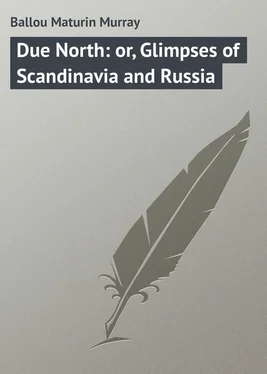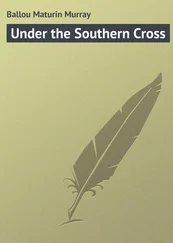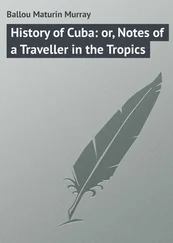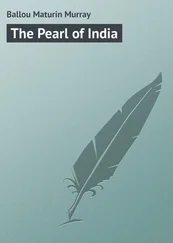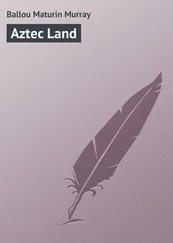Maturin Ballou - Due North - or, Glimpses of Scandinavia and Russia
Здесь есть возможность читать онлайн «Maturin Ballou - Due North - or, Glimpses of Scandinavia and Russia» — ознакомительный отрывок электронной книги совершенно бесплатно, а после прочтения отрывка купить полную версию. В некоторых случаях можно слушать аудио, скачать через торрент в формате fb2 и присутствует краткое содержание. Жанр: foreign_prose, Путешествия и география, на английском языке. Описание произведения, (предисловие) а так же отзывы посетителей доступны на портале библиотеки ЛибКат.
- Название:Due North: or, Glimpses of Scandinavia and Russia
- Автор:
- Жанр:
- Год:неизвестен
- ISBN:нет данных
- Рейтинг книги:3 / 5. Голосов: 1
-
Избранное:Добавить в избранное
- Отзывы:
-
Ваша оценка:
- 60
- 1
- 2
- 3
- 4
- 5
Due North: or, Glimpses of Scandinavia and Russia: краткое содержание, описание и аннотация
Предлагаем к чтению аннотацию, описание, краткое содержание или предисловие (зависит от того, что написал сам автор книги «Due North: or, Glimpses of Scandinavia and Russia»). Если вы не нашли необходимую информацию о книге — напишите в комментариях, мы постараемся отыскать её.
Due North: or, Glimpses of Scandinavia and Russia — читать онлайн ознакомительный отрывок
Ниже представлен текст книги, разбитый по страницам. Система сохранения места последней прочитанной страницы, позволяет с удобством читать онлайн бесплатно книгу «Due North: or, Glimpses of Scandinavia and Russia», без необходимости каждый раз заново искать на чём Вы остановились. Поставьте закладку, и сможете в любой момент перейти на страницу, на которой закончили чтение.
Интервал:
Закладка:
The possessions of Denmark upon the main-land are in our day quite circumscribed, consisting of Jutland only; but she has besides several islands far and near, of which Zeeland is the most populous, and contains the capital. As a State, she may be said to occupy a much larger space in history than upon the map of Europe. The surface of the island of Zeeland is uniformly low, in this respect resembling Holland, the highest point reaching an elevation of but five hundred and fifty feet. To be precise in the matter of her dominions, the colonial possessions of Denmark may be thus enumerated: Greenland, Iceland, the Faroe group of islands, between the Shetlands and Iceland; adding St. Croix, St. Thomas, and St. John in the West Indies. Greenland is nearly as large as Germany and France combined; but its inhabitants do not quite reach an aggregate of ten thousand. Iceland is about the size of our New England States, and has a population of seventy-five thousand. The Faroes contain ten thousand inhabitants, and the three West Indian islands united have a population of a little over forty thousand.
A slight sense of disappointment was realized at not finding more visible evidences of antiquity while visiting the several sections of the capital, particularly as it was remembered that a short time since, in 1880, the Danish monarchy reached the thousandth anniversary of its foundation under Gorm the Old, whose reign bridges over the interval between mere legend and the dawn of recorded history. Gorm is supposed to have been a direct descendant of the famous Viking, Regnar Lodbrog, who was a daring and imperious ruler of the early Northmen. The common origin of the three Baltic nationalities which constitute Scandinavia is clearly apparent to the traveller who has visited Denmark, Sweden, and Norway, or to any one who has even an ordinary knowledge of their history. The race has been steadily modified, generation after generation, in its more vivid characteristics, by the progressive force of civilization. These Northmen are no longer the haughty and reckless warriors who revelled in wine drunk from the skulls of their enemies, and who deemed death only respectable when encountered upon the battle-field. Clearer intelligence and culture have substituted the duties of peaceful citizens for those of marauders, and the enterprises of civilized life for the exaggerated romance of chivalry. Reading and writing, which were looked upon among them as allied to the black art a few centuries ago, are now the universal accomplishment of all classes, and nowhere on the globe will the traveller find a people more cheerful, intelligent, frank, and hospitable than in the three kingdoms of the far North.
Though the Danes are physically rather small, resembling in this respect the Japanese, still they spring, as we have seen, from a brave and warlike race, and have never been subjugated by any other people. On the contrary, in the olden time they conquered England, dismembered France, and subjugated Norway and Sweden. The time has been when the Danes boasted the largest and most efficient navy in the world, and their realm still justly bears the title of "Queen of the Baltic." As to seamanship, they are universally acknowledged to be among the best sailors who navigate the ocean. That Germany covets Denmark is more than hinted at. The author heard a loud-talking naval gentleman, of German nationality, coolly express the opinion that Denmark as an independent kingdom had nearly reached the close of its existence. This was on board the German mail-steamer, while crossing a branch of the Baltic between the ports of Kiel and Korsoer. Whether this individual reflected the ambitious purposes of the present German government, or only echoed a popular sentiment of his nation, the reader is left to judge. Were Bismarck to attempt, upon any subterfuge, to absorb Denmark, it is reasonable to suppose that other European powers would have something to say upon the subject; but that the map of Europe, as now constructed, is destined to undergo radical changes in the near future cannot be doubted.
The Denmark of to-day, typified by Copenhagen its capital, is a great centre of science and of art, quite as much so as are Munich or Dresden. It is surprising that so few travellers, comparatively, resort thither. For the study of ethnological subjects, there is no country which affords greater facilities, or which is more interesting to scientists generally. The spirit of Thorwaldsen here permeates everything; and in making his native city his heir, he also bequeathed to her an appreciation of art, which her eminent scientists have ably supplemented in their several departments of knowledge. To visit the unique Thorwaldsen Museum alone would repay a journey to Copenhagen, and no visitor to this Venice of the North should fail thoroughly to explore its riches. It is in the very centre of the city, situated close to the Palace of Christiansborg, and was erected in 1845 from the great sculptor's own design, based on the Egyptian order of architecture. It is two stories in height, and quadrangular in form, – the lower story containing sculpture only; the upper, both statuary and pictures. The external aspect of the structure is certainly not pleasing, but within, "where the marble statues breathe in rows," may be seen collected together and appropriately arranged six hundred of the great master's works, exhibiting the splendid and it is believed, as regards this department of art, unequalled result of one man's genius and industry. With galleries and vestibules the Museum contains over forty apartments, ample space being afforded for the best display of each figure and each group. The ceilings are elaborately and very beautifully decorated with emblematical designs by the best Danish artists. This enduring monument to art is also Thorwaldsen's appropriate mausoleum, being fashioned externally after an Etruscan tomb, and decorated in fresco with scenes illustrative of the sculptor's life. These crude and unprotected frescos, however, have become quite dim, and are being gradually effaced by exposure to the elements. So far as any artistic effect is concerned, we are honestly forced to say that the sooner they disappear the better. The interior of the Museum is peculiar in its combined effect, – a little depressing, we thought, being painted and finished in the sombre Pompeian style. It contains only Thorwaldsen's works and a few pictures which he brought with him when he removed hither from Rome, where so many years of his artistic life were passed. We have here presented to us the busts, models, sketches, and forms in clay, plaster, or marble, which represent all his works. Thorwaldsen's favorite motto was: "The artist belongs to his work, not the work to the artist," – a conscientious devotion which seems to invest everything which came from his hand. His body lies buried in the centre of the open court about which the building is constructed, without any designating stone, the ground being slightly raised above the surrounding pavement, and appropriately covered with a bed of growing ivy. A sense of stillness and solemnity seems to permeate the atmosphere as one pauses beside this lowly but expressive mound.
Among the portrait-statues which linger in the memory are many historic and familiar characters, such as Copernicus, Byron, Goethe, Hans Andersen, Humboldt, Schiller, Horace Vernet, Christian IV., the favorite monarch of the Danes, and many more. We have said that the general effect of these artistic halls was a little depressing; still, this was not the influence of the great sculptor's creations, for they are full of the joyous, elevating, and noble characteristics of humanity. Thorwaldsen revelled in the representation of tenderness, of youth, beauty, and childhood. Nothing of the repulsive or terrible ever came from his hand. The sculptor's regal fancy found expression most fully, perhaps, in the relievi which are gathered here, illustrating the delightful legends of the Greek mythology. He gives us here in exquisite marble his original conceptions of what others have depicted with the pen and the brush. No one can wonder at the universal homage accorded by his countrymen to the memory of the greatest of modern sculptors. The bust of Luther is seen in the main hall in an unfinished condition, just as the sculptor left it, and upon which, indeed, he is said to have worked the day before his death. It depicts a rude, coarse face, but one full of energy and power. In the Hall of Christ, as it is called, is the celebrated group of our Lord and the Twelve Disciples, the original of which is in the Cathedral. The impressive effect of this remarkable group is universally conceded; no one can stand before it unaffected by its grand and solemn beauty. Thorwaldsen's household furniture, writing-desk, books, pictures, and relics are here disposed as they were found in his home on the day of his death, – among which a clock, made by him when he was but twelve years of age, will interest the visitor.
Читать дальшеИнтервал:
Закладка:
Похожие книги на «Due North: or, Glimpses of Scandinavia and Russia»
Представляем Вашему вниманию похожие книги на «Due North: or, Glimpses of Scandinavia and Russia» списком для выбора. Мы отобрали схожую по названию и смыслу литературу в надежде предоставить читателям больше вариантов отыскать новые, интересные, ещё непрочитанные произведения.
Обсуждение, отзывы о книге «Due North: or, Glimpses of Scandinavia and Russia» и просто собственные мнения читателей. Оставьте ваши комментарии, напишите, что Вы думаете о произведении, его смысле или главных героях. Укажите что конкретно понравилось, а что нет, и почему Вы так считаете.
